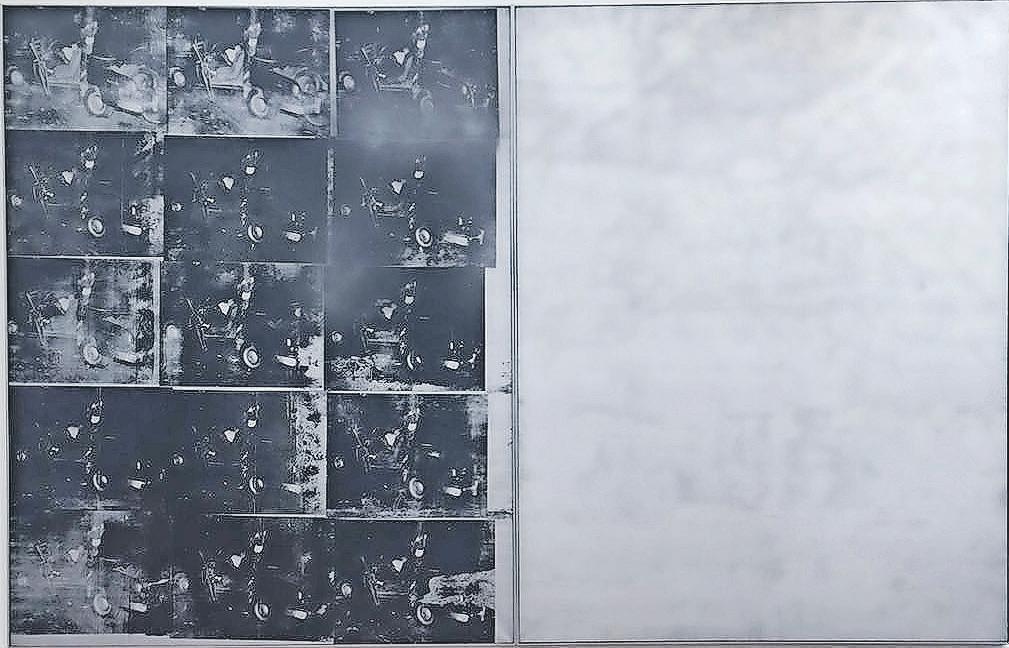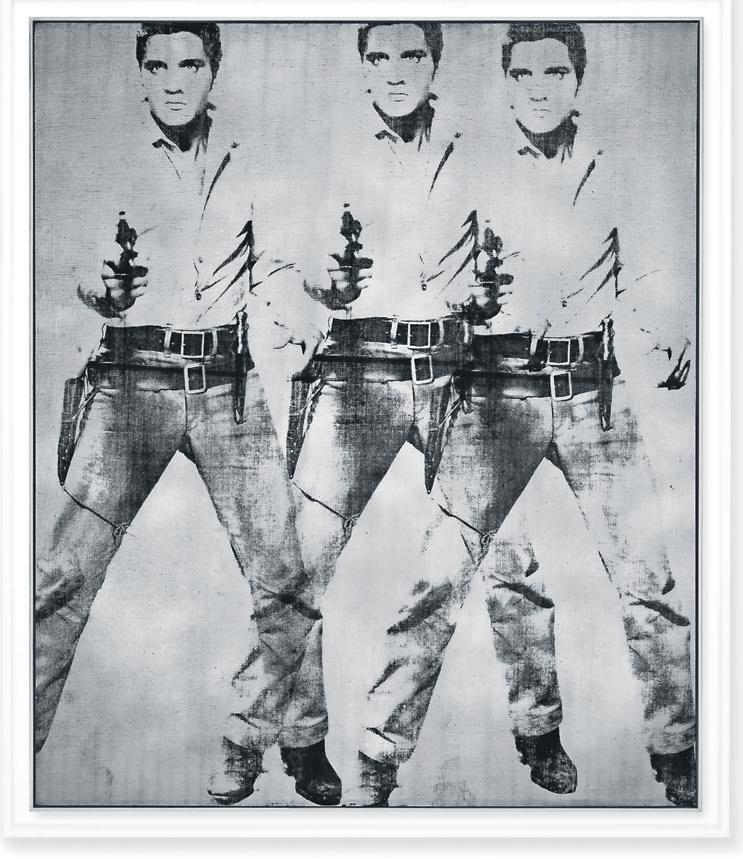
4 minute read
Literary Lives 12
from 08202021 WEEKEND
by tribune242
Warhol’s 1965 film Vinyl is an adaptation of Anthony Burgess’ dystopian novel A Clockwork Orange. He was always looking for new ideas and opportunities that he could create. Another of his critically successful films was Chelsea Girls (1966). It was a highly innovative film that consisted of two 16 mm-films being projected simultaneously with two different stories shown together. The sound would be raised in one film and lowered in the other so that it could elucidate the first. The many images seemed to replicate Warhol’s early 1960 silk-screen creations.
Warhol was a great fan of Radley Metzger’s film work and said that his firm The Lickerish Quartet was “an outrageously kinky masterpiece”. Warhol’s film Blue Movie (1968) portrayed Warhol superstar Viva making love in bed with Louis Waldon – another Warhol superstar. It was his last film as a director and was shown publicly in New York in 2005. The first time in thirty years. After the 1968, shooting at The Factory, a reclusive Warhol relinquished his involvement in filmmaking. His assistant director took over the film-making business at the Factory and directed these films more towards mainstream cinematography. Andy Warhol’s Dracula and Andy Warhol’s Frankenstein were two of these films and were much more mainstream than anything Warhol would have attempted. After Warhol’s death his films were slowly restored by the Whitney Museum and are occasionally projected at museums and film festivals.
Advertisement
“My fascination with letting images repeat and repeat – or in film’s case ‘run on’ – manifest my belief that we spend much of our lives seeing without observing.”
Andy Warhol
Warhol produced music too. He adopted the band Velvet Underground and made them a crucial element of the Exploding Plastic Inevitable multimedia performance art show. Warhol, together with Paul Morrissey who acted as the band’s manager, dressed the band all in black and made them perform, sometimes with Nico, in front of the movies that he was presenting. He produced their first album The Velvet Underground and Nico and designed their record album. Warhol’s involvement simply paid for the band’s studio time. Warhol and the band leader disagreed with the direction the band should take, and the relationship ended. After Warhol’s death, The Velvet Underground band members Lou Reed and John Cale re-united to release Songs for Drella – a tribute to Warhol.
Warhol designed many record album covers starting with This is John Walllowitch!!! (1964); The Rolling Stones album Sticky Fingers (1971) and Love you Live (1977); the two John Cale albums The Academy in Peril (1972) and Honi Soit (1981). One of Warhol’s last covers was a portrait of Aretha Franklin for her 1986 gold album Aretha.
Warhol influenced the punk rock band Devo, as well as David Bowie, who recorded a song “Andy Warhol” for his 1971 album Hunky Dory. Lou Reed, the band leader of The Velvet Underground, wrote the song “Andy’s Chest” about Valerie Solanas, who shot Andy Warhol in 1968. He recorded it with The Velvet Underground and it was released in 1985. Bowie later actually played Warhol in the 1996 movie Basquiat. “I met him a couple of times, but we seldom shared more than platitudes...He wanted to be very superficial. And seemingly emotionless, indifferent, just like a dead fish.” - David Bowie The band Triumph also wrote a song about Andy Warhol, “Stranger In a Strange Land” in their 1984 album Thunder Seven. • • • Warhol produced several unbound portfolios of his work. The first of several bound self-published books by Warhol was 25 Cats Named Sam and One Blue Pussy printed in 1954. The original issue was limited to one hundred and ninety. An original was auctioned in May 2006 for US $35,000 by Doyle New York. Other self-published books by Warhol include: A Gold Book, Wild Raspberries, and Holy Cats. His book A La Recherche du Shoe Perdu was published in 1955 and marked his transition from commercial to gallery artist. After gaining fame he wrote several books that were published commercially: a, A Novel (1968); The Philosophy of Andy Warhol (from A to B and Back Again) (1975); Popism: The Warhol Sixties (1980); and The Andy Warhol Diaries (1989).
Warhol created the fashion magazine Interview in 1969 that is still published today.
To produce his original silkscreens Warhol made photographs, or had them made, by his friends and assistants. These pictures were mostly taken with a specific model of Polaroid camera, The Big Shot, that Polaroid kept in production especially for Warhol. This photographic approach to painting had an enormous effect on artistic photography. Warhol was a very gifted photographer. It was his incredible eye and judgement that created a whole incredibly successful artistic wave.
“The silver moon has long since set, the spoon recycled in the blue bin. The foil has tarnished, the ‘new’ Factory dining room, scene of lunches ... has closed its high double doors. Art has become an essential, not a caprice, all too often a trivialised version of Andy’s originality ...”
- Nicky Haslam The Impatient Pen
WARHOL’s ‘Triple Elvis’ painting sold for $81.9 million at an auction in New York in 2014
Warhol’s will stipulated that his entire estate, except for a few modest family legacies, would go to create a foundation dedicated to the advancement of visual arts. • Sir Christopher Ondaatje is the author of The Last Colonial. He acknowledges that he has quoted liberally from Wikipedia; Holy Terror: Andy
Warhol Close Up (1990) by Bob Colacello; The Genius of Andy Warhol (2009) by Tony Scherman and David Dalton; Warhol: The Biography (2009) by V. Bockris; and The Impatient Pen (2019) by Nicky Haslam.






